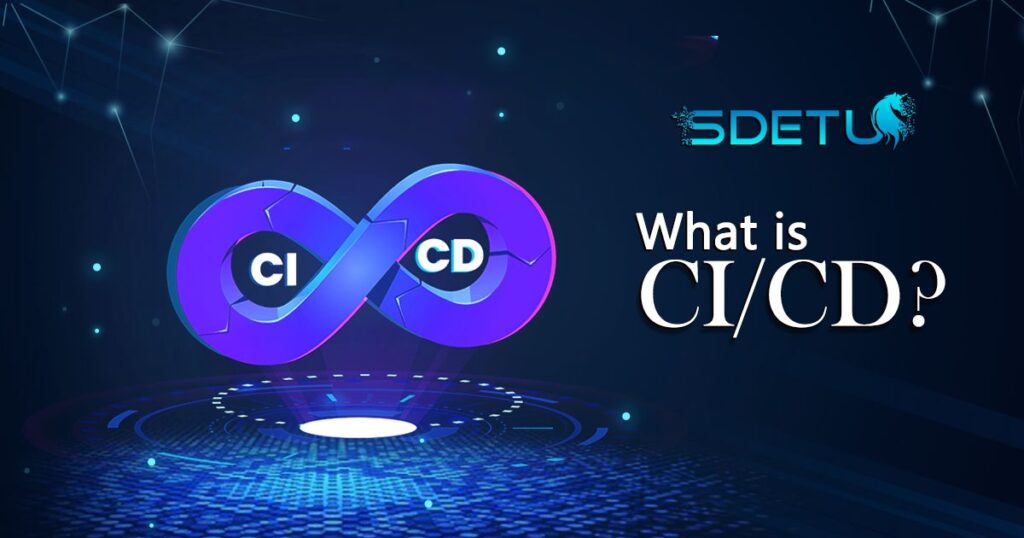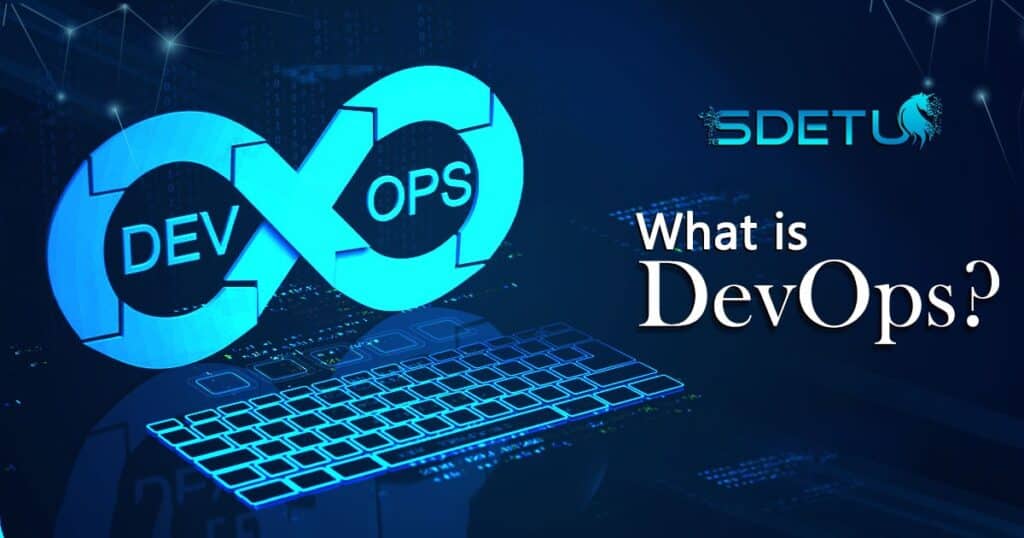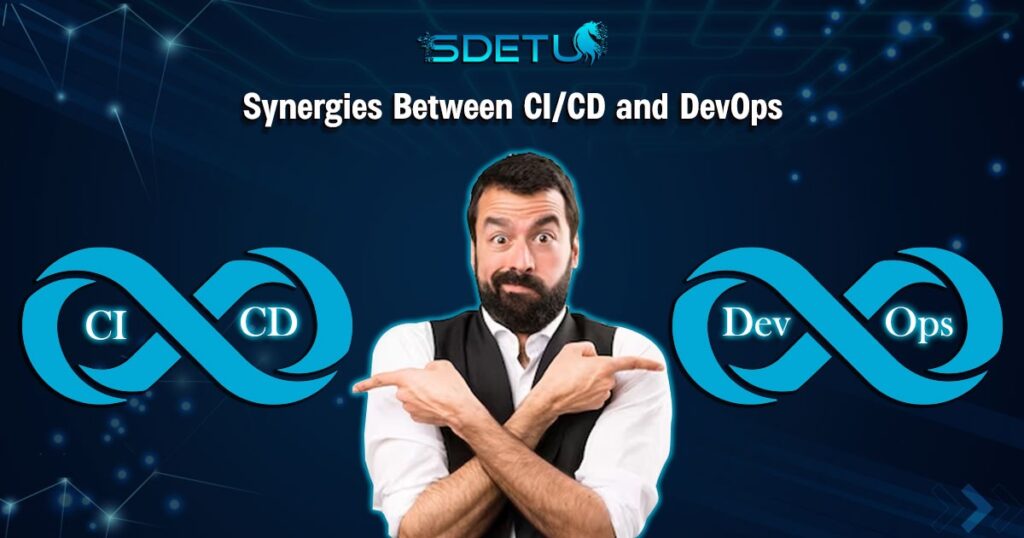Software development is not a straightforward journey that only requires code execution and launching. Sometimes, it is challenging because you cannot get everything right up front. Every time you introduce new or frequent code changes, you give a window of fresh loopholes that take time to solve. So this means you have to incorporate a structure that your software development process has to follow for smooth production.
Hmmm! Yeah… you have guessed it right. This is where CI/CD and DevOps come into the picture. They are best for streamlining your own software engineering and development process. However, these terms seem to be confusing, with some arguing they are the same and others claiming they are distinct. Well, they are different in terms of concepts. Let’s uncover them to bring this confusion to a close.
In this blog, you’ll learn what CI/CD and DevOps roles, differences, and synergies are. When you are set and done, you’ll be able to understand these concepts and make informed decisions without any doubt.
What is CI/CD?

CI/CD (Continuous Integration and Continuous Delivery or Deployment) are practices used by software development teams to make safe and executable codes. They ensure constant monitoring throughout the software development lifecycle using automation tools.
Now, let’s learn and understand CI/CD separately.
Continuous Delivery (CD) tests changes or modifications made after receiving reviews or feedback. These tests can be done when deploying code. In this case, improvements are manually reviewed.
Also, Continuous Delivery supports User Accepting Testing (UAT) before release or deployment. This means your software undergoes all the necessary tests to be ready for production.
Continuous Integration (CI) allows integration of new code into the software. For this to be possible, a version control system is used to allow constant modifications as well as ensure everything is okay when changes are made to the code base. By automating testing processes, development teams can minimize the time taken to make updates and fix bugs or errors.
So, I am sure you’re well enlightened with the CI/CD concept now. Wait, No? Let’s understand it better by creating a CI/CD pipeline. Below is just a simple way to create a CI/CD pipeline using tools like Gitlab or AWS.
Set up your desired Version Control System- Build a repository on your GitHub to cache the existing code-base
Set up Automated Testing- Use a framework like Junit to develop test scripts to allow automated unit tests when you push code changes to the GitHub repository.
Implement Continuous Integration- Here, you can use the Jenkins tool to create and test your code automatically when pushing modifications or testing code to your code repository.
Implement Continuous Delivery or Deployment- AWS CodeDeploye can be a good fit for delivering code and deploying the code modifications automatically in a staging environment. After passing all the tests, you can configure Jenkins for the production environment.
Monitor- Tools like AWS CloudWatch can help in monitoring any issues that require changes.
Now, I am sure you have an idea of what CI/CD is. Let’s get into DevOps
What is DevOps?

At first glance, you may wonder what the word “DevOps” is derived from which terms. Actually, it is the integration of ‘development’ and ‘operations. So, what is it exactly? DevOps is a set of cultural practices, operating principles, and ideas that are used to develop and deliver software products, applications, solutions, and services.
With the existence of DevOps, development teams can collaborate effectively and conduct work that relies on an automation process, making it easy to complete on time and improve their communication.
In simple terms, DevOps allows teams to work on different operations throughout the development cycle because the aspect of developer productivity working single-handedly is evenly distributed.
Let’s now cover some core principles to better understand the concept of DevOps.
Core Principles of DevOps
Continuous Improvement- Teams utilizing DevOps practices use feedback systems to monitor and enhance the quality assurance performance of software products.
Security- DevOps teams are responsible for continuous feedback throughout the entire software development life cycle. In this case, they must implement security testing processes using tools that can help identify loopholes.
Let’s take an example: a company that runs a movie app. They can opt for DevOps practices and principles of agile development. The company can utilize different tools to automate its development and deployment operations.
Implementing DevOps allows them to release new or updated functionalities and features faster, with desirable qualities. In return, the customers’ satisfaction rates increase.
So, the example above indicates that DevOps is a philosophy that is turned into a culture that a company adopts for the software solutions, products, or services to meet all the goals.
Let’s move on to the part you may have been waiting for.
CI/CD vs DevOps
The difference between CI/CD and DevOps has been a never-ending debate, and what is clear is that it is never going to end. I would argue that it is time to end the comparison and enjoy what they can offer because developers have continued to use them in the same situations.
Everything that we have covered above has at least shed light on the differences and similarities between CI/CD and DevOps. Let’s put them into context:
DevOps is a concept or an idea. We mentioned above that it is an integration of ‘development’ and ‘operations.’ This means DevOps is not tangible.
CI/CD is a concept, but it is realized or felt through a tooling kit. Here is where the CI/CD pipeline comes in.
DevOps sets a culture for the teams to follow in the software development life cycle. CI and CD and the benefits of incorporating this culture. In other words, DevOps creates a sense of responsibility in development and operations.
CI/CD are practices that allow the team or business to get constant or timely feedback concerning the software’s performance. Automation is at the center of this success.
Now, you can tell that there is no significant difference between CI/CD and DevOps. In fact, DevOps is the ‘tree,’ and CI/CD is the ‘leaf,’ meaning they have a parent-like relationship
Synergies Between CI/CD and DevOps

CI/CD and DevOps share synergies in emphasis on collaboration, automation, and continuous or repetitive software development practices. As mentioned above, DevOps is a cultural approach that entails communication and integration between the development team and operations teams.
CI/CD is integral to DevOps as it ensures automation building, effective testing, and deployment of code changes, promoting a continuous and streamlined delivery pipeline. The principles of automation and collaboration in CI/CD align with the cultural and collaborative aspects of DevOps.
So, in simple terms, CI/CD and DevOps work hand-in-hand to deliver quality software or applications to targeted users.
Implementing CI/CD in a DevOps Environment
Now, let’s look at the steps involved in implementing CI/CD in a DevOps Environment. They include:
Version Control- Select a version control you are familiar with, like Git.
Automated Builds- You can use Jenkins for continuous integration.
Automated Testing- Implement a comprehensive automated testing process for code quality assessment.
Continuous Deployment- Here, you can use tools like Docker or Kubernetes to automate deployments.
It will not be smooth sailing implementing CI/CD. So, you have to be aware of some challenges and solutions.
Here are some:
Integration Complexity- There are diverse integrating tools, and it can be confusing to pick. To have an easy time when you face this, use integrated CI/CD platforms.
Testing Hiccups or Bottlenecks- You can encounter slow testing. Distribute tests to solve this problem.
Security Concerns- You should expect security vulnerabilities. So, integrate automated security scans in the pipeline.
Cultural Resistance- Do not expect everyone in the team to embrace DevOps culture. To have smooth adaptation, foster training, and collaboration.
Conclusion
In conclusion, that article has managed to address CI/CD(Continuous integration and continuous deployment) and DevOps concepts), debunking the “differences” and at least ending the debate. DevOps is a culture, and CI/CD is the enabler of this culture through practices and tools. With this information, you are able to understand the concepts when interacting with them in your software development cycle life. What matters is incorporating them to have a better software quality and delivery process. They are tied!
Thanks for reading! Comment below, and I will answer.
Frequently Asked Questions
Agile is a development approach that emphasizes iterative progress. CI/CD deals with automation in software delivery. DevOps is a philosophy or culture that involves integrating development and operations teams.
The “Sec” on DevSecOps means security. It is integrated into DevOps processes to ensure continuous security. CI/CD pipeline deals with practices of automation of the software delivery.
DevOps teams are responsible for CI/CD. Who are DevOps teams? They include developers, business professionals, or CI/CD engineers. All have to collaborate to ensure the successful implementation and maintenance of CI/CD pipelines for a successful software delivery process.
The CI/CD process in DevOps involves the integration of code changes, automated testing, deployment, and production.
An example of DevOps is the integration of development and operations for effective software delivery processes. In this case, continuous integration and continuous deployment are used to enable faster, quality, and reliable releases
The stages of CI/CD in DevOps include:
Code Development- Here, developers write and commit code changes to selected version control systems.
Continuous Integration (CI)- Code changes are integrated into a repository automatically.
Continuous Testing (CI)- Automation and tests are conducted to ensure the code changes function properly.
Continuous Deployment (CD)- The code changes are automatically deployed to production environments.
Continuous Monitoring- Developers monitor application or software user behavior, condition, and performance to identify issues to make improvements.
DevOps is a philosophy and cultural aspect that focuses on the integration between development and operations as well as communication among development teams to improve the efficiency and quality of software. On the other hand, a DevOps pipeline is an automated process that facilitates automated testing, continuous integration, and deployment of software.
CI deals with automated testing and code integration, while CD focuses on extending the automation to the deployment process.







